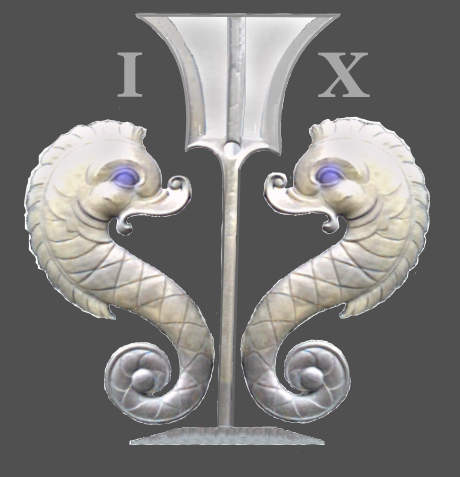Along the Intracoastal Waterway - Day 6
/Day 6 – 420 nm to go With regret, we departed from Charleston as the sun rose. Our intent was to continue along the ICW, but the winds were favorable, and the tides and bridge schedules weren't, at least for the day, and so we decided we'd head outside for a change. We traveled down the Cooper, met the Ashley and found the Atlantic Ocean once again. The Charleston Light appeared hazy in the distance behind the rock jetty that lines the channel to the sea.
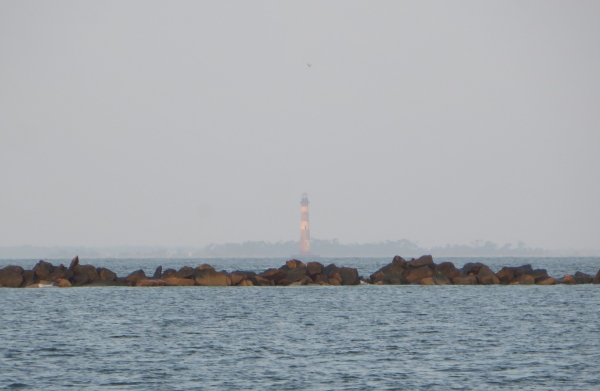
Shrimp boats with dolphins and gulls following their trail, were out in full force as a hot, rising sun melted away the morning haze and we prepared for another sizzling day, but at least we'd have a sea breeze to cool us.
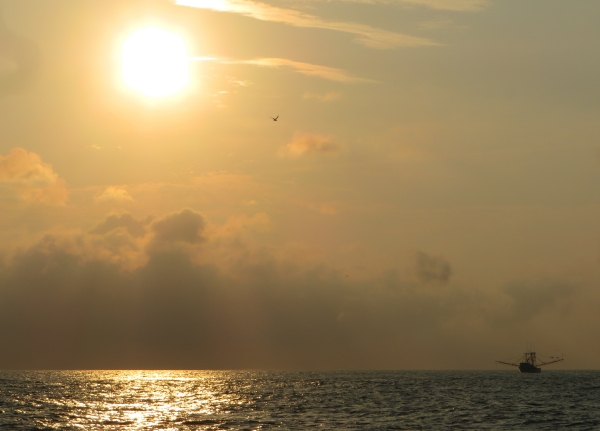
We headed out of the Charleston Channel, cleared Rattlesnake Shoals and observed no anchoring or dredging warnings on the charts due to unexploded mines, a remnant of WWI and WWII harbor protection programs. We rounded Cape Romain and headed for the Georgetown Inlet. We only had a one day forecast of favorable winds but had yet to find them. We saw 5-8 knots with gusts of 10-11, but not much more. We were motor-sailing, moving along smartly in the 7s and 8s.
As we headed up the Georgetown Inlet, a long 15nm channel, we began to hear distant rumbles of thunder above the engine roar and the sky began to cloud up. The VHF wailed a weather alert … thunder and lightning cells moving fast and furiously in our area. We could see lightning bolts piercing the blackened sky to the west. The extra iPad and GPS went into the microwave immediately.
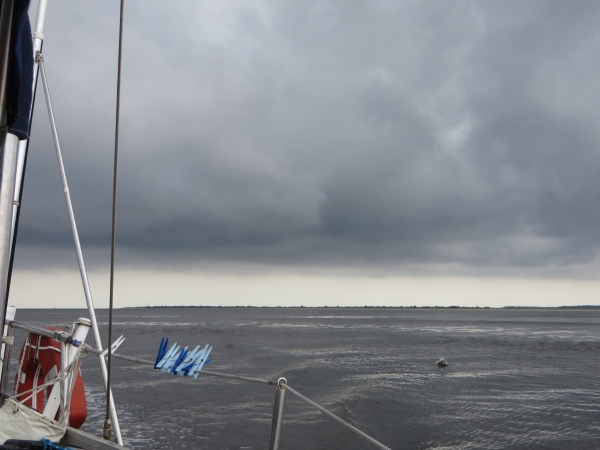
We passed South Carolina's oldest lighthouse, the scenic Georgetown Light, but our minds were concentrated on getting to a secure anchorage before the heavens broke loose.
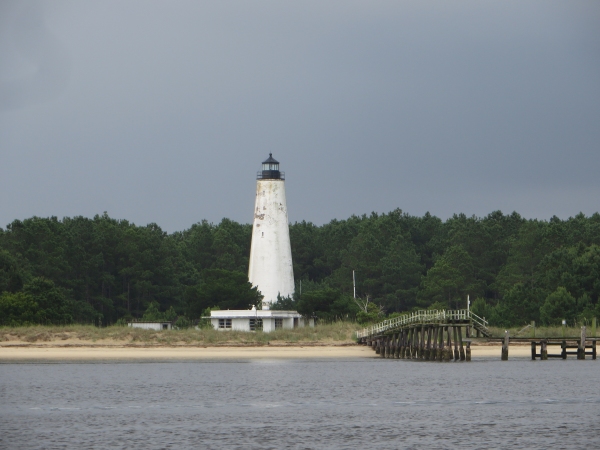
We anchored just before the Ocean Highway Bridge in a perfect little spot just off the ICW. We'd no sooner got the anchor down and snubbed than the heavens opened and the decks were washed clean. The thunder and lightning provided a good visual and audio show, but nothing came close enough to be of concern. It blew away in an hour or so, leaving us with a cool sleeping night for a change.
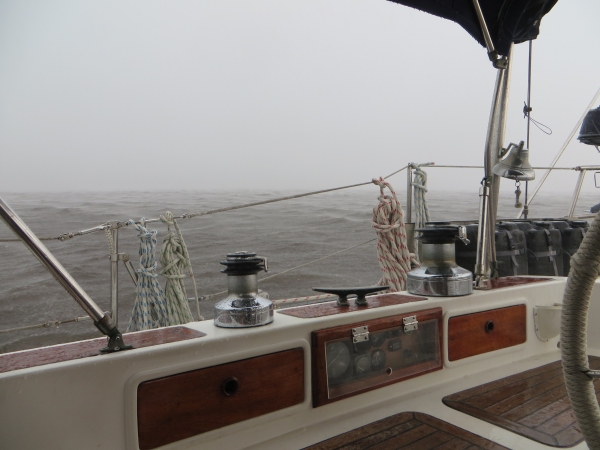
Dinner, a movie and plotting the next day's route took up the rest of the evening and we zonked out shortly after the sun went down. It's amazing how just sitting in the cockpit and steering for 12 hours can tire out a body.
